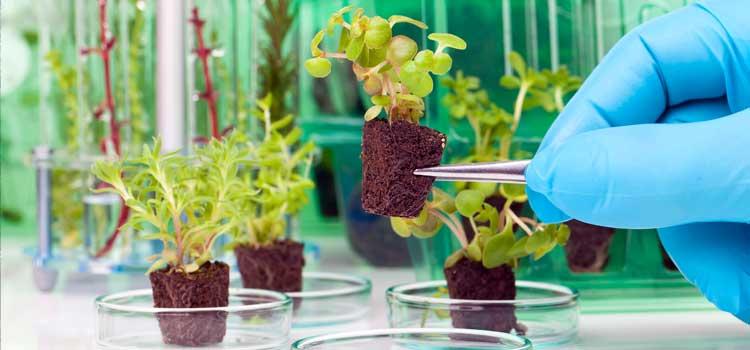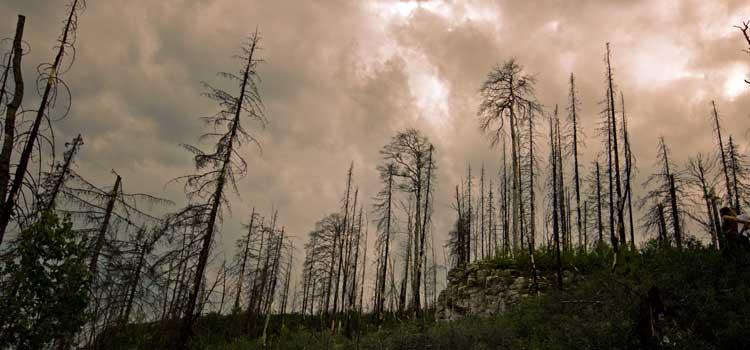
Bees are crucial to crops around the world, but human activity is putting them at risk.
May 19, 2017
There are 20,000 species of bees buzzing around the world, moving pollen among many flowering plants, so they can produce fruits, seeds and a number of different crops that we rely on for food.
But that critical service in the ecosystem is under threat because many bee populations are in serious decline. University of Calgary researchers are studying a number of factors contributing to that decline – including a changing climate. “Climate change is heating up the southern ranges of bumblebee habitat in North America and Europe,” says Dr. Paul Galpern, PhD, assistant professor in the Faculty of Environmental Design.
Usually, when a region becomes too warm for a species, the wildlife will respond by moving northward into areas that were once too cold. But that’s not happening with bumblebees. “Instead of expanding into new territories, like other species are doing in response to climate change, the bumblebees are not moving northward,” says Galpern. “But they’re also quickly losing habitat in their southern ranges because it’s getting too warm. It’s almost like they’re being squeezed in a vise.”
Galpern and his colleagues tracked dozens of bumblebee species in North America and Europe using 100 years of bee observations from museum and citizen scientist collectors. “We don’t know why bees aren’t moving north, they should be able to,” says Galpern.
Climate change isn’t the only thing putting bees and their essential services at risk. Galpern is studying how agricultural practices and fragmented landscapes are contributing to the decline in bees, and how promoting conservation practices in agricultural areas could help reverse the decline.
“There are a number of interacting factors that will affect bees, it’s not just climate change,” says Galpern. “Things like pesticides and loss of habitat for bees are likely to be more important than climate change in understanding the disappearance of pollinators.”

Bees are crucial to crops around the world, but human activity is putting them at risk.
Other researchers, meanwhile, are looking at how the loss of those pollinators is affecting crops around the world. Dr. Lawrence Harder, PhD, professor in the Department of Biological Sciences in the Faculty of Science, was one of dozens of researchers to study 41 crop systems to understand the consequences of having fewer bees and other pollinators including flies, butterflies and beetles.
“As habitat for wild insects is converted to agricultural uses, there are fewer types and numbers of pollinators available to visit crops,” says Harder. “As a result many of their flowers are not adequately pollinated.”
This means popular foods including coffee, tomatoes and watermelon may be at risk. “To maintain and enhance global crop yields, we need to look at new ways to manage pollinators and integrate honey bees with a diverse number of wild insects.”

Plants adapt to changing climate conditions by changing where they live.
Over the history of the earth, the plants growing in a given area have changed with climate. Dr. Jana Vamosi, PhD, associate professor in the Department of Biological Sciences in the UCalgary’s Faculty of Science, is trying to predict which plants may experience the most change and what impact that may have on ecosystems.
Using historical records, researchers can calculate a species’ climate tolerance. “We can compare where the plant species was found, say, 100 years ago and then observe whether the species has shifted its distribution with climate,” says Vamosi. “Looking ahead, we use climate projections and ask whether the plant can tolerate the mean temperature that’s predicted in 50 years.” If not, the distribution of the plant species will shift, shrink or go extinct.
Every plant plays some sort of role, big or small, in the ecosystem. “It could produce a berry that we like to eat or be a species that supports an herbivore,” says Vamosi. “We need to understand what the plants’ roles are to know what the impacts will be if a species disappears.” Understanding what plants are at risk of extinction will help direct efforts to come up with methods to help save them.
Vamosi is also working with archaeologists and Indigenous collaborators from around the world to study how people throughout history have adapted to plants coming and going due to climate and other changes in the landscape. The collaborative historical ecology project looks at how understanding our past can help create an ecologically sustainable future.
The director of the university’s herbarium – a vast collection of thousands of plants from Alberta and around the world – Vamosi started wondering about plants as a teenager hiking with her parents. She wanted to know whether it was safe to eat a certain berry, but her parents weren’t sure. “That question – what berries I could eat and if not, why not – really sparked my curiosity and set me on the path to my academic career.”

UCalgary researching how climate change affects mountain pine beetle infestations
Researchers studying how Alberta’s forests are faring with threats such as the mountain pine beetle and climate change are finding some surprising results.
Dr. Mary Reid, PhD, professor in the Department of Biological Sciences and in the Environmental Science Program, researches how bark beetles, which include the mountain pine beetle, interact with trees. The beetles are very difficult to stop – they have built-in antifreeze that lets them survive winter and because they live under the bark most of the time, you can’t wipe them out by spraying. And Reid has found that the trees’ natural defence – secreting a chemical toxic to mountain pine beetles, monoterpenes – may, in fact, attract the bugs.
“The big trees with the most monoterpenes are the ones that are getting attacked,” says Reid. “The beetles can smell them and think they’re a good place to breed.” But the good news is the big pine trees make up a small portion of the forest, and when they’re taken out by the pine beetle smaller trees get more light, nutrients and water and can start growing faster.

Research shows trees can evolve to cope with environmental stress.
Dr. Samuel Yeaman, PhD, researches how trees deal with climate change and other environmental stress. His work is advancing our understanding of evolution and helping Alberta’s forestry industry pick robust trees. Lodgepole pine and interior spruce are the two most commonly planted species in Alberta and B.C. The two different conifers have been evolving separately for 140 million years.
“These species are evolving in response to the same environments,” says Yeaman, assistant professor in the Department of Biological Sciences and Alberta Innovates - Health Solutions Chair in Bioinformatics and Computational Biology. “They’ve more or less figured out how to solve problems of environmental stress independently.”
Conifers have over 20,000 genes in their genomes, yet Yeaman and his colleagues have found that lodgepole pine and interior spruce used the same 47 genes to adapt to environmental stresses such as heat, cold or drought, suggesting there are only so many ways the trees are able to deal with different climates.
“If we see the same thing over and over again in all of these different species then it suggests that there isn’t a lot of flexibility in evolution, the species are constrained,” says Yeaman. “If they want to adapt to cold they’ve got to use this particular recipe – gene A, gene B, gene C have to change in these particular ways. Whereas if we see different responses in every single species it suggests there is a lot of flexibility and a lot of capacity to evolve in all sorts of different ways.”
The results provide methods to study patterns in genomes of other species as well as help Alberta’s forestry industry pick species that will grow well in different climates and regions.
– – – – –
Participate in a research study
– – – – –
Dr. Paul Galpern, PhD, is an assistant professor in UCalgary's Faculty of Environmental Design, teaching landscape ecology and geographic information systems (GIS). A major theme of his research is pollinator conservation and how landscape use and climate change affect wild pollinator status and pollination services in natural and agricultural landscapes, and how this may contribute to pollinator decline. View Paul's publications
Dr. Lawrence Harder, PhD, is a professor in the Department of Biological Sciences in UCalgary's Faculty of Science and Fellow of the Royal Society of Canada. His research illustrates the contribution of plant-pollinator interactions to the diversity of flowering plants, reveals inflorescences, rather than individual flowers, as the fundamental unit of plant mating, and integrates ecological and genetic perspectives on plant mating. View Lawrence's publications
Dr. Jana Vamosi, PhD, is an associate professor in UCalgary's Department of Biological Sciences. She is a biodiversity scientist studying the role of traits in the conservation biology and functional ecology of plants. View Jana's publications
Dr. Mary Reid, PhD, is a professor in the Department of Biological Sciences and in the Environmental Science Program. Her research primarily focuses on the strategic interactions between bark beetles and their host trees. View Mary's publications
Dr. Samuel Yeaman, PhD, is an assistant professor in the Department of Biological Sciences and the Alberta Innovates - Health Solutions Chair in Bioinformatics and Computational Biology. His research aims to understand how organisms adapt to spatially and temporally heterogeneous environments and how this process shapes the genetic and genomic architecture of complex traits. View Samuel's publications